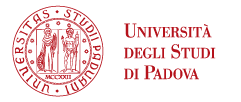
MoST - Monitoring Sea-water intrusion in coastal aquifers and Testing pilot projects for its mitigation
Mitigation strategies to reduce saltwater intrusion
Description:
Saltwater intrusion in coastal aquifers is a worldwide problem caused, among other factors, by aquifer over exploitation related to human activities, such as water supply for human consumption and irrigation, land reclamation of low-lying farmlands, land climate changes which contribute to the reduction of groundwater natural recharge.
The need of taking into account this topic has consequently intensified, with the aim to achieve a better understanding of the physical processes driving the continental-marine water exchanges and define suitable countermeasures limiting the occurrence.
Geophysical surveys and monitoring sites, as well as, laboratory and numerical experiments and a proper managing plan of freshwater the resources are essential for this purpose.
Both Italy and Croatia are significantly affected by saltwater intrusion in their coastal regions with serious consequences on agricultural activities and tourism that may become dramatic in a relatively short time due to climate change effects. In this framework, the main objective of MoST is the monitoring of the seawater intrusion in specific regions of the in northern Adriatic coasts of Italy and Croatia to assess its relevance, and suggest/test appropriate countermeasures. In addition, the project expects to improve the capacity in transnationally tackling saltwater contamination vulnerability and the preservation of strategic fresh water resources in coastal areas.
The project develops in two main phases: firstly, a detailed data collection and geophysical survey will be carried out. This step includes the capitalization of previous experiences about the saltwater intrusion monitoring, mitigation plans and implemented countermeasures. The analysis of the collected data will help understanding the process and its evolutions. In the second phase, pilot sites will be established to verify the efficiency of possible countermeasures (e.g., underground barriers, recharge wells, recharge drains established along elevated high-permeability paleo-channels) to limit or mitigate the seawater intrusion/contamination. Moreover, laboratory physical models will be developed to serve as benchmarks for the numerical models adopted to simulate/analyze the field results. The project will be developed with the collaboration and the involvement of local populations and local authorities, which will be the main stakeholders of the project actions because of the expected benefits on agriculture and touristic activities.
Contact:
University of Padova - ICEA Department
Paolo Salandin
paolo.salandin@unipd.it
Project duration: 01/01/2019 - 30/06/2022
ERDF: 2.208.817,31 euro
Total budget: 2.598.608,61 euro
Project Partners:
LP: University of Padova, Department ICEA
PP1: CNR
PP2: Consorzio di Bonifica Adige-Euganeo
PP3: Regione Veneto – Difesa del Suolo
PP4: University of Split, Faculty of Civil Engineering, Architecture and Geodesy
PP5: Croatian Waters
PP6: Regional Development Agency Dubrovnik-Neretva County (DUNEA)
Website: https://www.italy-croatia.eu/web/most
The Project Video Presentation






